H. P. Lovecraft: The Horror of Science – Part 2
In Part 1 of this essay, I examined the American writer of “weird fiction,” H. P. Lovecraft (HPL), on the 100th anniversary of World War I, and gave an overview of Lovecraft’s writings, his influence on present day writers, and his bounding popularity in American culture over the last thirty years.
In Part 2 of this article, I want to explore the major cultural, scientific, and philosophic themes found in Lovecraft’s fiction. These themes – centered around his views on science, on the nature of scientific inquiry, and his sense that modern Western society is decadent – offer a robust explanation as to why Lovecraft’s creations have become an ever expanding fixture in American popular culture.
Lovecraft, Science, & Change
Born in 1890 in Providence, Rhode Island, Lovecraft lived through four plus decades of unprecedented and fundamental change in both America and Europe. This might seem a claim too bold by half, but I want to argue that the changes that occurred during HPL’s lifetime were as portentous as any changes we have experienced in the last thirty years. For the majority of Americans today, our historical understanding of rapid technological change begins somewhere in the mid to late 1980s (if that date in itself is not a cultural abyss), with the introduction of both the desktop and portable (laptop) computer, the mobile or cellular telephone, the internet and the infrastructure (fiber optic cables) necessary to provide fast and affordable service, and the explosion of all forms of media in our lives. As dramatic as the changes have been in American society in the last thirty years, we would do well to remember that this sort of rapid scientific, technologic, and cultural change began much earlier in the United States – in the last decades of the 19th century, at a time and place both when and where Lovecraft matured and developed as a writer.

In terms of Lovecraft’s views on science and technology, he considered himself a “mechanistic materialist,” a follower of ancient Greek and Roman thinkers such as Democritus, Epicurus, and Lucretius. According to this view, reality (which developments in the physical sciences in his time seemed to confirm), is a mechanism, comprised of matter, which acts and interacts in precise, lawful ways which can be described mathematically. Since all reality is fundamentally matter, it follows that concepts such as soul, spirit, élan vital, life-force, or any non-material substance simply do not exist and are, for those who believe in them, a mirage, a wisp of hope, a delirium of desperation. In one of his stories, he fairly describes himself: “West was a materialist, believing in no soul and attributing all the working of consciousness to bodily phenomena…” (Lovecraft, 1922).
Lovecraft’s mechanistic materialism implies that all effects have a material cause; hence his view of reality is strictly deterministic. As a result, Lovecraft thinks that the notion of free will is an illusion – if every effect has a cause, it follows that we are not free to act as we will. There will always be a deterministic foundation for every act, a cause for every effect, however complicated or opaque to human perception. Lovecraft, who had read Nietzsche, would agree with the sentiments expressed in Twilight of the Idols: “…our knowledge of man today is real knowledge precisely to the extent that it is knowledge of him as a machine. Formerly man was presented with ‘free will’ as a dowry from a higher order: today we have taken even will away from him, in the sense that will may no longer be understood as a faculty…the will no longer ‘effects’ anything, no longer ‘moves’ anything” (Nietzsche, 1968, p. 15, italics mine).
Lovecraft’s strict scientific materialism comes not only from the study of ancient authors. In addition to literature, he was well read in a variety of scientific disciplines, as well as in contemporary historians and philosophers, and knew of the latest scientific theories and technical inventions. These would include writings by the biologists Charles Darwin, Ernst Haeckel, and Thomas Huxley; Newtonian physics, as well as the newer physics of relativity and quantum mechanics, via contemporary articles; the philosophers Friedrich Nietzsche, George Santayana, Bertrand Russell; and the historian Oswald Spengler.
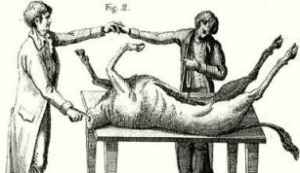
A truncated list of scientific and technological discoveries and inventions will give a picture of the rapidity of change in the decades of Lovecraft’s lifetime, from 1890 to 1937. These discoveries equal, if not surpass, the discoveries of contemporary science in the last thirty years, and show just how radical the extent of the change was, how revolutionary this new understanding of the universe became, and how much of our modern scientific and technological achievements – our world-view, the way that we both consciously and unconsciously understand the world around us – are based upon these earlier investigations. In chronological order, notable scientific discoveries and inventions include:
1859 – Charles Darwin publishes On the Origin of the Species.
1879 – Thomas Edison invents the first practical incandescent light bulb.
1882 – Thomas Edison builds the first commercial power station in lower Manhattan.
1892 – Nikola Tesla invents and builds the first alternating-current generator.
1893 – Wireless communication and radio invented by Nikola Tesla.
1903 – The Wright brothers invent a gas motored and manned airplane.
1905 – Einstein publishes a paper on “The Special Theory of Relativity.”
1908 – Henry Ford sells the Model T automobile, the first affordable, public car.
1911 – General Electric introduces the first commercial refrigerator.
1912 – Alfred Wegener discovers continental drift, now the science of plate tectonics.
1916 – Albert Einstein publishes “The Theory of General Relativity.”
1922 – Neils Bohr awarded the Nobel Prize in Physics for his work on quantum mechanics.
1926 – Erwin Schrödinger discovers the equations of quantum mechanics.
1926 – Robert Goddard launches the first liquid-fuel rocket.
1927 – Werner Heisenberg discovers the uncertainty principle.
1928 – Alexander Fleming discovers penicillin.
1928 – Philo Farnsworth shows the world the first working television.
1935 – Robert Watson patents radar.
Let me examine three of these scientific changes which changed our conception of the universe, our place in it, and what effect these discoveries would have on how we would live out our daily lives. Lovecraft will use all three, with Lovecraftian twists, when he writes his weird fiction and cosmic horror.
Chronologically, the first major and world-changing work that influenced Lovecraft came some thirty years before his birth and concerned the scientific field of biology. The event, of course, was the publication in 1859 of On the Origin of the Species by Natural Selection by Charles Darwin. One cannot underestimate the power of Darwin’s explanation of how all species of life on earth came into being and changed over time. It was profound, both for those who agreed and those who did not. For some, it seemed a direct attack upon the written word of God. Specifically, evolution seems in direct contradiction to the tenets of the Biblical accounts of creation, including the creation of man. The origin of the human species (and all species) was ripped from any deistic explanation, any teleological explanation, and hereafter would be accounted for by the natural processes, over long periods of time, according to modes of adaptation, random mutation, exaptation, and genetic inheritance. The debates generated by the publication of the book, and the various scientific specialties born from Darwin’s initial ideas, are as controversial in American culture today as they were in Great Britain and Europe in the late 19th century. (In 2007, at a cost of $27 million dollars, the Creation Museum officially opened in Petersburg, Kentucky.)
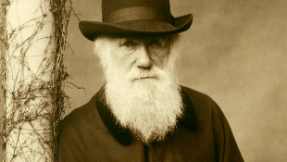
Whereas Darwin effected a change in how we see ourselves in terms of the origin, totality, and inter-relatedness of life on earth, the greatest change in terms of how people actually lived their lives on a daily basis must be the discovery and harnessing of electricity. Electricity, of course, was a long known phenomenon, and the science of electricity predates our time frame by approximately 100 years. Benjamin Franklin and Michael Faraday are two noteworthy examples of those who attempted to provide a scientific explanation for the phenomenon. It is also true to say that it took thirty to forty years for the American public to accept electricity in their homes. “Even after the First World War, that percentage [of those who had electricity installed in their homes] rose only to 20 percent” (Simon, 2004, p.4). It wasn’t until the establishment of New Deal Rural Electrification Program that electricity became available to rural areas in the 1940s. Likewise, it wasn’t until the end of WWII that a sizeable portion of Americans could afford to purchase the appliances dependent upon electric power: refrigerators, electric ranges, electric mixers, and running water pumped by electricity.
Despite the length of time it took for Americans to accept and use, in their homes, electricity, the momentum, by the turn of the 20th century, was inescapable. Progress in the practical aspects of electricity – how to harness and deliver it in a safe and cheap manner – would change America forever. Through the progress of electrical engineering, electricity, and the things that could be done with electricity, would become an essential commodity for individual life and the force behind changes in how we work. A source of safe and cheap electricity does away with gas lamps and candles, effectively banishing the dark of night with a flick of a switch. It changes the way we cook our food (electric stoves) and how we store our food (the refrigerator). It changed the way we communicate with one another over long distances (first the wireless telegraph and then the telephone). And it changed how we work. This last item is a result of the ability to use electricity in factories, for mass production, and the subsequent introduction of the production line. The ability to harness electricity is usually given as the main reason for the “second industrial revolution,” the time period in the latter half of the 19th century where the means of production, and of how we work with those means, is now based on and dependent upon the power of electricity.
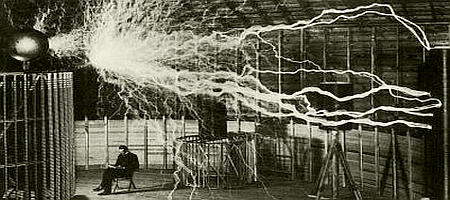
Revolutionary changes in the physical sciences surge with the publication, in 1905, of Albert Einstein’s “Special Theory of Relativity,” followed in 1916 by his “Theory of General Relativity.” Einstein’s re-thinking of the laws determining the properties and action of matter over-threw Newton’s laws as formulated in his Principia Mathematica, published in 1687. A theory that had been accepted for over 200 hundred years was now obsolete; Einstein’s explanation encompassed and replaced Newton’s theory of mechanics, and in a disturbing way. As the title of his papers imply, the measurement of whatever quantity under consideration is relative to the velocities of the observer. There is no fixed or privileged position to make an absolute judgment. Secondly, space and time are no longer to be considered separate “entities,” but rather must be considered together and in relation to each another. What Darwin did in biology Einstein did for the physical universe. Phenomena on the micro and the macro scale, phenomena that Newton’s physics could not account for, were explained by Einstein’s special and general theories of relativity. It was Einstein’s theory of general relativity that flustered Lovecraft; he write of his “profound intellectual distaste” to the “main points of relativity” (Lovecraft, 1976, vol. V, p. 298).
At the same time, the physicists Niels Bohr, Max Planck, Werner Heisenberg, Erwin Schrödinger, and others developed the foundations of the strange world of quantum mechanics. Quantum mechanics began with a description of the universe of the very small, of sub-atomic particles and their behavior. In quantum mechanics, the behavior of sub-atomic particles is probabilistic – in contrast to the mathematical certainty of classical mechanics. The strange behavior of sub-atomic particles led Einstein to reject several of the main claims of quantum mechanics; in a famous phrase, he called the counter-intuitive phenomenon of quantum entanglement, where quantum particles interact and then separate over large distances, “spooky action at a distance.” Despite the mathematical complexity of quantum mechanics, Lovecraft had certainly read accounts of the discipline. In “Dreams in the Witch House,” the narrator Walter Gilman says that he “knew he wanted to be in the building where some circumstance had more or less suddenly given a mediocre old woman of the seventeenth century an insight into mathematical depths perhaps beyond the utmost modern delvings of Planck, Heisenberg, Einstein, and de Sitter” (Lovecraft, 1933). (Willem de Sitter, the only relatively unknown here, co-authored a paper with Einstein on the possibility of large amounts of matter that do not emit light – something now referred to as dark matter.)
Scientific discoveries and technological inventions, while outstanding in and of themselves, are part of larger systems, and their influence alters the dynamic and interactive economic, ecological, social, and political systems within which these changes occur. In the United States, the introduction of the automobile altered completely our entire conception of transportation and spatial relationships. The automobile provided an unprecedented means of swift travel, the ability of individuals to move away from their homes, to find employment at distances formerly unimagined, and removed barriers which allowed for upward social mobility. (It was also the setting for a generation’s first sexual experiences.) The electric stove and electric refrigeration transformed our traditional ways of eating, as well as how we purchase and store edible goods. This in turn provides the possibility for a recasting of the roles of women in the family. The discovery of penicillin (and, in general, medical knowledge) reshapes our continual battle against the forces of nature; no longer will (most) bacteria have the dominant advantage over the health and life of human beings. What was once either fatal or debilitating now becomes inert.
Given the entire invention, development, and mass production of modern technology, individuals and social groups went through an astounding transformation during the period of Lovecraft’s life. Ethnic, minority, and immigrant groups altered their relationships to the majority culture; women their relations to men; consumers their relations to producers; workers their relations to owners; students their relation to teachers; and the young their relation to the old. By any standard, these scientific discoveries and technological inventions equal, if not surpass, the rate of technological change from the 1980s to the present.
For Lovecraft in the 1930s, looking back at the end of the 19th century, the time period in history he felt most akin to – or even displaced from – it would have been like one of his characters peering into a vast and unbridgeable chasm. From haphazard, cobble-stoned streets lit by gas lamps to rationally planned city blocks with their radiating boulevards and carefully placed parks, all illuminated by electric bulbs, from cholera infested city wells to running water purified and pumped by electric batteries, one can imagine that Lovecraft felt like the narrator of his story “The Trap:” “The fourth-dimensional region in which Robert found himself was not, as in scientific romance, an unknown and infinite realm of strange sights and fantastic denizens; but was rather a projection of certain limited parts of our own terrestrial sphere within an alien and normally inaccessible aspect or direction of space” (Lovecraft, 1932). That’s Lovecraft, stranded in this brave new world.
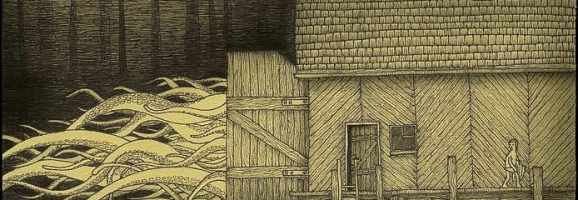
Forbidden Knowledge
The above list and descriptions were presented in a predominately positive manner – they allow human beings a measure of control over nature, the ability to use nature for human ends. Any assessment of technological change, however, must take into account the deleterious effects as well as the beneficial, and so we turn to Lovecraft, who has much to say about the mostly unforeseen and deleterious consequences of the scientific endeavor.
Lovecraft wholeheartedly accepts the scientific viewpoint concerning the nature of reality – and in fact takes it to its logical extreme. Where most (though certainly not all) during his lifetime see scientific progress, Lovecraft sees a different, more ominous vista; one which, if scientific endeavor continues apace, leads to potential devastation. The first worry is the scope of the scientific endeavor: the mechanistic materialist view of reality is tied to the idea that science, or the scientific method, is the only legitimate way to discover the truly real. The second worry concerns the reality exposed by that same endeavor. The first has to do with knowledge, of how we come to investigate and know the world; the second has to do with the objects of our investigations, the reality uncovered by scientific pursuit. And it is safe to say that on both counts, in Lovecraft’s view, we would do well to act cautiously.
In Lovecraft’s story “Call of Cthulhu,” the narrator, Francis Wayland Thurston, speculates, in the opening paragraph, about the nature of the various scientific fields and the inherent danger residing in scientific knowledge:
“The most merciful thing in the world, I think, is the inability of the human mind to correlate all its contents. We live on a placid island of ignorance in the midst of black seas of infinity, and it was not meant that we should voyage far. The sciences, each straining in its own direction, have hitherto harmed us little; but someday the piecing together of dissociated knowledge will open up such terrifying vistas of reality, and our frightful position therein, that we shall either go mad from the revelation or flee from the deadly light into the peace and safety of a new dark age” (Lovecraft, 1928).
In this opening paragraph, both the endeavor of scientific inquiry and the reality that such an endeavor reveals elicits horror. In an age where we think unfettered knowledge is both a good and a right, Lovecraft makes the case for forbidden knowledge; there are some things man is not meant to know, and to pursue the line of inquiry poses a threat, either fatal or of insanity.
The narrator of “At the Mountains of Madness,” the geologist William Dyer,fervently does not wish to tell what was found on his Antarctic mission, but feels he must: “I am forced into speech because men of science have refused to follow my advice without knowing why. It is altogether against my will that I tell the reasons for opposing this contemplated invasion of the Antarctic – with its vast fossil-hunt and its wholesome boring and melting of the ancient ice-cap – and I am the more reluctant because my warning may be in vain” (Lovecraft, 1936). In fact, within the story’s explicit argument for forbidden knowledge, there is knowledge that Dyer’s graduate student, Danforth, refuses to share with his mentor. “I have said that Danforth refused to tell me what final horror made him scream out so insanely – a horror which, I feel sadly sure, is mainly responsible for his present breakdown” (1936). In “At the Mountains of Madness,” we have a situation where the justification of forbidden knowledge is used to forbid knowledge to the initial forbidder.
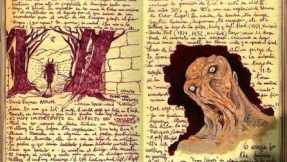
The idea that there should be a thing such as forbidden knowledge is, of course, anathema, when put in general terms, to current views in the liberal West concerning the individual’s right to access any and all information, however psychologically and physically devastating it may turn out to be. In fact, it is simply assumed that the quest for knowledge, as well as the knowledge itself, will produce some sort of social good; we will be better off for the knowing.
“In general,” because we should recognize that forbidding knowledge to others is as common as having children. All parents begin parenthood as book-banners. They do not believe that their children should be exposed to types of information or knowledge. Most of us accept this. It is when the children begin to reach the age of adulthood, and the banning is now done by a school or some governmental agency, that things become murky. As an example, in France, the works of the Marquis de Sade were banned well into the 1960’s. Does any high school in America have in its library a copy of the Marquis de Sade’s 120 Days of Sodom? Should they? The concerns here are moral and are about what sort of affect the book will have on the individual/child. But this is not what Lovecraft addresses.
In the Christian West, books were banned (placed on the Index Librorum Prohibitorum, the List of Forbidden Books) because they challenged or ran counter to the doctrines of the Roman Church. Galileo’s defense in 1616 of a heliocentric universe, where the earth orbits the sun, was condemned because heliocentrism is “foolish and absurd in philosophy, and formally heretical since it explicitly contradicts in many places the sense of Holy Scripture” (the original Church document, made public in 2014, can be found here).
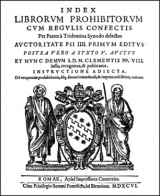
Most would now agree that the Church was simply wrong about Galileo’s heliocentric understanding of our solar system and that Galileo’s works on this subject should not have been banned. It seems clear because, in this case, it is a matter of an empirically verifiable fact. The earth does orbit the sun.
But this is just the case with Lovecraft: what should be forbidden is scientifically verified fact. The narrators in many of his stories are scientists, or individuals with some degree of scientific aptitude, and what they learn, which is empirically verifiable, is precisely what should be forbidden. As noted above, the first paragraph of “Call of Cthulhu” could not be more explicit about the claim that certain knowledge is either not meant for man or that man is not ready for that knowledge.
In “The Case of Charles Dexter Ward,” the young Charles, motivated by a love of learning, uncovers scattered remains of alchemical knowledge that lead to the resurrection of his long-dead ancestor. Charles goes mad, but it is not a madness predicated on some defect of mind or character. The family doctor, Willet, discovers the truth and writes to Charles’ father: “Have only this consolation—that he was never a fiend or even truly a madman, but only an eager, studious, and curious boy whose love of mystery and of the past was his undoing. He stumbled on things no mortal ought ever to know, and reached back through the years as no one ever should reach; and something came out of those years to engulf him” (Lovecraft, 1941). What drives Charles insane is the reality he found in his rational search for knowledge – and I’m not sure how much consolation either his father or we should take from this.
There is another notable example of those who advocate a more deliberate course about unfettered knowledge: those who advocated for and actually built the first atomic bomb. Albert Einstein said to Linus Pauling, in 1954, that he had “made one great mistake in my life – when I signed the letter to President Roosevelt recommending that atom bombs be made” (Clark, 1971, p. 620). It seems that Einstein felt, later in his life, that we were not capable of using this knowledge in a sane way, that human beings could not be trusted with the technical ability to destroy an entire planet.
Even Robert Oppenheimer, leader of the Manhattan Project, who never wavered in his belief that they did the correct thing, expressed the poignant contradiction between what the scientists at Los Alamos had attained and the potentially world-destroying power of the atomic bomb. In a talk at M.I.T. in 1947, he said: “Nor can we forget that these weapons as they were in fact used dramatized so mercilessly the inhumanity and evil of modern war. In some sort of crude sense which no vulgarity, no humor, no overstatement can quite extinguish, the physicists have known sin; and this is a knowledge which they cannot lose” (Oppenheimer, 1947). It is rare to hear a physicist speak about sin. And rarer still to recast Adam as a physicist. One is left to wonder if, like Adam – like William Dyer in “At the Mountains of Madness”– the price of the knowledge of sin is ultimately worth the bearing.
The Reality of Evil
Along with the theme of forbidden knowledge, there is a comparably unnerving concern about the pursuit of scientific knowledge. The claim here is that reality itself is evil; that if we were to actually see and observe what is real, we would either be destroyed by it, run in hysteria from it, or be driven mad. These are the opening lines of Lovecraft’s “Facts Concerning the Late Arthur Jermyn and His Family” – a gruesome story centered around genetic transmutation and sexual bestiality that produces a nightmare hybrid lineage – where Lovecraft places the relationship between the pursuit of knowledge and the objects of knowledge in the starkest of terms:
“Life is a hideous thing, and from the background behind what we know of it peer daemoniacal hints of truth which make it sometimes a thousandfold more hideous. Science, already oppressive with its shocking revelations, will perhaps be the ultimate exterminator of our human species – if separate species we be – for its reserve of unguessed horrors could never be borne by mortal brains if loosed upon the world. If we knew what we are, we should do as Sir Arthur Jermyn did; and Arthur Jermyn soaked himself in oil and set fire to his clothing one night” (Lovecraft, 1921).
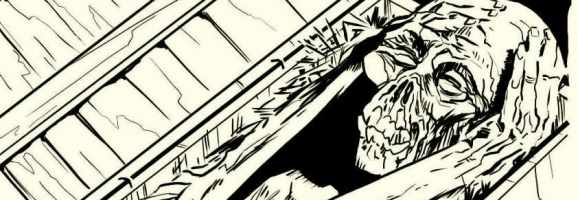
It’s not just that life on the surface is hideous; unfettered scientific inquiry reveals a reality behind this one so utterly bleak, utterly dismal, it would surprise if Lovecraft’s characters did not break down by the sheer overwhelming horror of it. The narrator of “Dagon,” a German U-Boat Captain in WWI, ends the story thus:
“I cannot think of the deep sea without shuddering at the nameless things that may at this very moment be crawling and floundering on its slimy bed, worshipping their ancient stone idols and carving their own detestable likenesses on submarine obelisks of water-soaked granite. I dream of a day when they may rise above the billows to drag down in their reeking talons the remnants of puny, war-exhausted mankind—of a day when the land shall sink, and the dark ocean floor shall ascend amidst universal pandemonium” (Lovecraft, 1919).
In most of Lovecraft’s later works, scientific exploration reveals to us prior life, ancient, eons-old beings who are either entirely indifferent about human beings or actively hostile. Any attempt to claim a superior place for man by means of his capacity to reason, his ability to logically and systematically explain all aspects of the world in material terms, even in his highest artistic creations, ultimately shatters on the shards of beings incomprehensibly higher in rank than anthropoid man. In “At the Mountains of Madness,” the geologist Dyer and the graduate student Danforth are able to translate bas-reliefs found deep in the interior of these icy mountains. This is what they discover:
“These vertebrates, as well as an infinity of other life-forms – animal and vegetable, marine, terrestrial, and aerial – were the products of unguided evolution acting on life-cells made by the Old Ones but escaping beyond their radius of attention. They had been suffered to develop unchecked because they had not come in conflict with the dominant beings. Bothersome forms, of course, were mechanically exterminated. It interested us to see in some of the very last and most decadent sculptures a shambling primitive mammal, used sometimes for food and sometimes as an amusing buffoon by the land dwellers, whose vaguely simian and human foreshadowings were unmistakable” (Lovecraft, 1936).
Joshi (1990) says that “This is probably one of the most fiercely cynical and misanthropic utterances ever made: the degradation of humanity can go no further…The guiding principle is the same: the utter decimation of human self-importance by the attribution of a grotesque or contemptible origin of our species” (p. 140). The origins of humanity were an accident; once developed – and if not destroyed by being bothersome – we are food or used as brief amusement.
The Rationality of Science?
A third, further criticism of scientific rationality emerges in Lovecraft’s writings. Over and above the trope of forbidden knowledge and the terrifying reality science uncovers, there is a concern that the endeavor of science itself is at bottom irrational – which can, and has (in Lovecraft’s judgment) led to a degeneration of Western civilization.
The origin of modern science – the source or origin of what we call the “scientific method” – is usually placed at the home of Francis Bacon (1561-1626). Bacon is interpreted as the father of a method which advocates experimentation and inventiveness as the route to knowledge. Knowledge of the natural world would not come through the reading of authoritative, ancient texts (usually Aristotle), which constituted the accepted and traditional mode of education. Nor will the passive observation of nature bring knowledge. Knowledge of the natural world comes, according to Bacon, through an active working upon nature. He indicates that experimentation on nature is necessary both for the attainment of knowledge and the inventions “that may in some degree subdue and overcome the necessities and miseries of humanity” (Bacon, The Great Instauration, 1620).
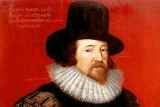
This way of looking at nature simply explodes in the next four hundred years. Leo Strauss, in The City and Man, succinctly summarizes this point of view:
“What is peculiar to modern thought is not this conclusion by itself but the consequent resolve to liberate man from that enslavement by his own sustained effort. This resolve finds its telling expression in the demand for the “conquest” of nature: nature is understood and treated as an enemy who must be subjugated. Accordingly, science ceases to be proud contemplation and becomes the humble and charitable handmaid devoted to the relief of man’s estate. Science is for the sake of power, i.e. for putting at our disposal the means for achieving our natural ends. Those ends can no longer include knowledge for its own sake; they are reduced to comfortable self-preservation. Man as the potential conqueror of nature stands outside of nature” (Strauss, 1964, p. 42).
This comportment towards nature leads to the claim that scientific inquiry is itself inherently irrational, in two senses. (1) If Strauss is incorrect, and if science is the unfettered search for knowledge, then scientific investigation is arbitrary, and in this sense irrational. (2) If Strauss is correct, and science is about the conquest of nature, of manipulating and using nature for “comfortable self-preservation,” then it has (mostly) failed, and is therefore also irrational. For what else would we call an activity that did not produce the results intended?
In the first case (1), we grant that the scientist is not seeking knowledge in order to solve problems, help individuals, or aid society. If the scientist severs the link between the search and the end, then the search becomes…what? A matter of whim? A search for fame? To simply fulfill the scientist’s curiosity? Something your boss made you do? There does not seem to be any inherently non-arbitrary answer for what the scientist is doing if the doing is not tied to goals or ends.
Despite the apparent irrationality of scientific inquiry divorced from the aims of the quest, this is actually an interesting and sophisticated understanding of scientific progress. If science is to be useful it must first be use-less; science can only be progressive if it is unbound from practical considerations. Otherwise, we would simply repeat what we have already done, apply the same solutions that have been used in the past. New knowledge, new inventions, new innovations would be happenstance.
This question as to whether science should be the pursuit of knowledge for its own sake, with little or no regard for the ends, became publicly debated in the late 19th century. As Christine Ferguson details in her article “Decadence as Scientific Fulfillment” (2002), the British physician Morell Mackenzie, in “Is Medicine a Progressive Science?” argued that the scientist must be willing to divorce his work from the priority of usefulness. The highly influential British utilitarians such as Jeremy Bentham and John Stuart Mill argued that the aim of science should be the furtherance of the well-being, or happiness, of humanity. Mackenzie argues exactly the opposite: “The art of medicine must not be judged solely, or even chiefly, by crude statistics or recoveries and deaths” (Mackenzie, 1886, p. 166). He then goes on to argue that some good might derive from abandoning the sentimentalism preventing medical experimentation on capital felons. Medicine can only move forward by becoming amoral and indifferent to the sufferings of the experimental subjects. Experimental medical science should be use-less – and hence irrational in the sense described above.
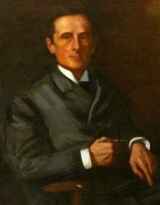
In the second case (2), if science is, as Strauss and Lovecraft think, an endeavor of power, of conquering and subduing nature in order to make our lives more comfortable, then a cogent argument can be made that this endeavor has failed. This question often founders on the difficulty of how to devise or agree on criteria by which we can determine what “comfortable” or “better off” or even “happier” is, so we can then judge whether or not the ends produced by science have achieved that goal. This apparent wall need not prevent us from determining, at least in a provisional way, whether a scientific discovery or a technological invention has contributed to the well-being and overall health of individuals, groups, or societies. Per Aristotle, the certitude expected here is commensurate with the subject and we do not need a definite, rigid definition of happiness in order to determine if an act promotes well-being or no.
Prima facie, it is certainly true that scientific discoveries have made our lives better – medical treatment, ease of communication, clean water, availability of information, facility of travel, electricity and all that it powers, etc. And it also certainly true that, when comparing a modern way of life to an older or ancient one, most in America would come down on the side of the modern. It is unclear, of course, what civilization the older or ancient societies would choose – theirs or ours? Would Augustus Caesar give up imperial Rome? Would Socrates forsake classical Athens in 399 BCE, something he was loath to do even when sentenced to death? Would Dante leave Florence if he were not exiled from it?
While the ongoing process of conquering nature has undeniably had its benefits, these same apparent advancements can be viewed either as not beneficial in themselves or as the cause of unforeseen negative consequences. As an extreme example, the National Socialists used scientific advances and technology in an incredibly efficient way – in order to commit racial genocide (among other aims). The National Socialists certainly thought that they were advancing and bettering the German state/race, however appallingly misguided. This is of course a zealous case – but it is not, unfortunately, exceptional. The use of technology in any war might be considered irrational in itself, depending upon your view of human nature.

But there are other ways, not as immediately recognizable as harmful, in which the ends of science could be taken as doubtfully advantageous. Ease of travel provided by the automobile leads to general ecological degradation, facilitates urbanization and over-crowding, causes death and injury, wastes inordinate amounts of time in commuting (along with its attendant stress), all of which, in sum, engenders and fosters a general decline in the welfare and happiness of individuals. In 2012, in America, the number of deaths attributed to the automobile was 33,561, up 2.6% from the year before. Is this an insignificant number?
The seemingly innocuous microwave oven destroys the necessity of having all family members present at meals; cooking and eating together do not have to be a familial activity since individual family members can simply heat or cook their food whenever they see fit. The microwave oven, thought to be an aid in the preparation of food, has unexpectedly produced cracks in the family block, divisions within the nexus of family relations.
Ease of communication can lead to information overload, doubt as to which communication (source) to believe, which information is true and which not, and even distrust of family and friends, as exemplified by the necessity to verify electronic communications even if they come from somebody you know. Confusion, doubt, and distrust are hardly the stuff upon which social good is made.
In Lovecraft’s fiction, this usually plays itself out on an individual level: once one has attained knowledge, partial or complete, of a “thing” or entity or a society of unknown beings, of a reality not readily accessible, one is lost. “I alone have seen it [the nameless city], and that is why no other face bears such hideous lines of fear as mine; why no other man shivers so horribly when the night-wind rattles the windows” (Lovecraft, 1921). Or this paean to those who burn with curiosity: “I have looked upon all that the universe has to hold of horror, and even the skies of spring and the flowers of summer must ever afterward be poison to me” (Lovecraft, 1926).
In a position certainly not exclusive to Lovecraft – and we have had 77 years to further confirm his view – a cogent case can be made that the development of the modern world has had an overall debilitating effect on individuals, groups, communities, and society as a whole. Not only WWI, which Lovecraft lived through, but WWII has to give one pause as to the beneficence of science. So too the Cold War – for 40 years, in an increasingly expensive armaments race, the danger of worldwide nuclear destruction was a real and present threat in the lives of individuals in the United States and Europe (and one presumes in the former U.S.S.R., though their propaganda machine might have mitigated this concern). The terrorists who attacked the United States in 2001 used sophisticated technology: they used four large Boeing passenger planes and relied upon the jet fuel as a weapon. Their use of technology certainly made life in America less secure and much more frightening.
In response to the attacks, the U.S. government pursued a set of policies that they, and most Americans, thought rational to the threat. But as a consequence, the U. S. government replaced one set of specific fears for a set of less tangible ones. The unforeseen result of the reaction by the U.S. government consists in the creation of an expansive scientific and bureaucratic surveillance system. Under the guise of “national security,” we now live under an all-encompassing surveillance system as polished as any that the residents of the former Soviet Union experienced.
Whatever one may think about Edward Snowden’s public exposure of secret NSA gathered information, Americans do not think that their government is protecting what it should protect, our constitutional rights. In an alarming poll by Rasmussen Reports, more Americans think the U. S. government is a threat to their constitutional rights rather than a safeguard. The Rasmussen Report found “56% of Likely U.S. Voters now consider the federal government a threat to individual rights rather than a protector of those rights” (Rasmussen, 2013). At the recent Black Hat conference on global information security, the computer security analyst Dan Geer points out that when the PEW Research Center asked 12,000 experts to comment on what they foresee in terms of the direction our digital world is taking, one theme ran throughout the responses: “Trust will evaporate in the wake of revelations about government and corporate surveillance and likely greater surveillance in the future” (Geer, 2014). What began as a rational response to an external national threat has become an irrational practice against the (mere? likely? assured?) possibility of an inward threat.

The effluvia of scientific progress proceeds with a depressing regularity, one not lost on Lovecraft. In “Nyarlathotep,” we see what an advanced race can do with science:
“Into the lands of civilisation came Nyarlathotep, swarthy, slender, and sinister, always buying strange instruments of glass and metal and combining them into instruments yet stranger. He spoke much of the sciences—of electricity and psychology—and gave exhibitions of power which sent his spectators away speechless, yet which swelled his fame to exceeding magnitude. Men advised one another to see Nyarlathotep, and shuddered. And where Nyarlathotep went, rest vanished; for the small hours were rent with the screams of nightmare” (Lovecraft, 1920).
These are Goya’s monsters that reason breeds as it sleeps, although sleep sounds a bit mawkish for what Nyarlathotep induces. Nyarlathotep the sinister is ein Ungeheuer, a monster who has become a monster chasing science.
Science can be viewed as a search for knowledge for its own sake. If so, then it seems as if the scientific process is inherently arbitrary and irrational. Science can also be viewed as the pursuit of power, the attempt to subdue nature for human needs and desires. Whatever good technological changes bring about – and they certainly have brought about beneficial changes – the effects of the technology can be as damaging, if not more so, than advantageous. They all too often have a deleterious effect on the quality of human life; and, at worst, they pose a planet wide threat to the numerous species inhabiting the earth, including the human. If so, then it can be argued that science has in some degree failed in its mission – and is therefore a rational activity turned irrational.
Herbert West, the acme of a Lovecraftian scientist, would challenge death’s domain. Not only would he reanimate a corpse – he would reanimate a headless corpse:
“I can still see Herbert West under the sinister electric light as he injected his reanimating solution into the arm of the headless body. The scene I cannot describe—I should faint if I tried it, for there is madness in a room full of classified charnel things, with blood and lesser human debris almost ankle-deep on the slimy floor, and with hideous reptilian abnormalities sprouting, bubbling, and baking over a winking bluish-green spectre of dim flame in a far corner of black shadows” (Lovecraft, 1922).
Rent with the screams of nightmare. Das Ungeheuer.
The Rational Pursuit of Decadence
There is a long and dominant tradition in the social sciences, literature, and the visual arts in the West which views modernity as a “problem.” Modernity in this sense is the sum of the changes brought about by the scientific revolution and end of the feudal system in Europe. Specific changes include a loss of belief, or crisis in faith, in religion; an ever-expanding dependence on technology; a developing capitalist system which commodifies human beings and the things that they produce; and the rise of large bureaucracies and their invasion into our individual, private lives. In contrast to societies based on traditional, usually theological or spiritual world-views, the inception of modern modes of living creates tension with traditional social organization, undermining traditional knowledge and disrupting traditional power relations within the community. Modernity can be seen from this perspective as socially disruptive and potentially violent. As the certainties of the traditional world-view are threatened, many are caught in a bind between the two: at times rigidly clinging to traditional order, at times desiring a liberation, modernity’s promise, from the past.
The overall debilitating effect of modern life is acutely expressed by the writer Franz Kafka (1883-1924) in his story Die Verwandlung, or The Metamorphosis, published in 1915, a tale which condemns modern life because it creates angst (the German word encompasses anxiety, fear, dread, and worry), solitude among the many, and mind-numbing labor:
“Oh God,” he thought, “what a grueling job I’ve picked! Day in, day out – on the road. The upset of doing business is much worse than the actual business in the home office, and, besides, I’ve got the torture of traveling, worrying about changing trains, eating miserable food at all hours, constantly seeing new faces, no relationships that last or get more intimate. To the devil with it all!” (Kafka, 1972, pp. 3-4).
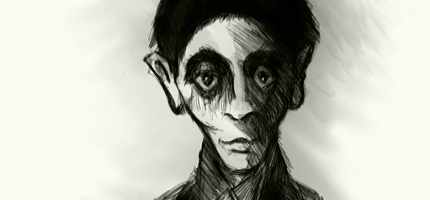
Max Weber (1864-1920), one of the founders of sociology, in his analysis of modern life, sees modern societies excelling at the creation of abstract, secular, and rational bureaucracies – a condition which leads, he argues, to the “disenchantment” of the world. “The fate of our times is characterized by rationalization and intellectualization and, above all, by the ‘disenchantment of the world’” (Weber, 1946, p. 155). In modern societies, scientific understanding is valued over belief, and institutions and processes are oriented towards rational goals. The essence of traditional societies lies in their reliance upon belief, religious or spiritual belief, and the notion that the world is ordered according to a divine or spiritual plan. In an oft-quoted and justly famous phrase, Weber characterizes the increasing rationalization and bureaucratization inherent in modern social life as an “iron cage” (Weber, 1994, xvi). The iron cage of modernity (or the iron cage of bureaucracy) traps individuals in systems based solely on rational calculation, efficiency, and control. Hence the rationalization of modern society restricts human freedom and human potential, results in a loss of autonomy and individuality, and does not deliver us into a technological utopia that should set us free.
Here is Lovecraft’s take on the disenchantment of the world in his 1929 story “The Silver Key”:
“They had chained him down to things that are, and had then explained the workings of those things till mystery had gone out of the world. When he complained, and longed to escape into twilight realms where magic moulded all the little vivid fragments and prized associations of his mind into vistas of breathless expectancy and unquenchable delight, they turned him instead toward the new-found prodigies of science, bidding him find wonder in the atom’s vortex and mystery in the sky’s dimensions. And when he had failed to find these boons in things whose laws are known and measurable, they told him he lacked imagination, and was immature because he preferred dream-illusions to the illusions of our physical creation” (Lovecraft, 1929).
In whatever way once chooses to characterize modern life – as producing debilitating unforeseen consequences through technological advancement; as severing the search for knowledge from its ends; as a rational activity producing angst, alienation, disenchantment, or some combination of all three – the scientific endeavor itself is decadent (a decline from a former enchanted world); the individuals in this modern world are debased, self-consumed with their selves, monumentally self-indulgent; and what modern society produces –mass generated products for a mass culture, including works of art – is also degenerate and dissolute.
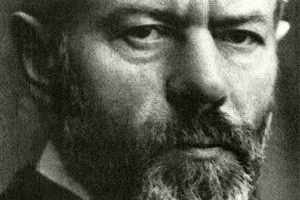
The First World War
Part 1 of this essay began with reference to the 100th anniversary of the beginning of World War I, which is the example par excellence of scientific rationality transformed into the irrational. In August of 1914, events in Europe spiraled into an agonizing vortex of madness, a time when “Europe collectively committed suicide” (Colavito, 2008, p. 171). Lovecraft matured during the four years of the war, and wrote his major works in the lingering shadow of World War I (he did not live to see the abominations of WWII). WWI was a war that, with its irrational start, its incredible brutality and number of dead, and its display of modern mechanized warfare, made an ineradicable impression on all the combatant nations, as well as those on the periphery.
Despite the appellation “The Great War,” “The War to End All Wars,” or H. G. Wells’ term “The War That Will End War,” the historical remembrance of World War I has been overshadowed and eclipsed by the scale of the depravity and revulsions of the Second World War. Post World War II, the general tendency is to view World War I as the precursor to the Second World War on a smaller or diminished scale. And while WWII was certainly a continuation of WWI on a much larger scale, in itself WWI was seen, by those at the time, as the epitome of irrationality. Through the curtain of WWII, It is difficult to recall just how devastating and shattering World War I was at the time.
H. G. Wells, in his book The Outline of History, described the aftershock of WWI:
“The world in the year after the great war was like a man who has some vital surgical operation very roughly performed and who is not yet sure whether he can now go on living or whether he has not been so profoundly shocked and injured that he will presently fall down and die. It was a world dazed and stunned” (Wells, 1921, pp. 1053-54).

Four points will serve to illustrate the profound effect and consequences of the the First World War:
1. The first crack in modern rationality, in terms of the WWI, was why it began in the first place. The end result seemed to have sprung from an obviously senseless and irrational start. John Keegan writes:
“Why did a prosperous continent, at the height of its success as a source and agent of global wealth and power and at one of the peaks of its intellectual and cultural achievement, choose to risk all it had won for itself and all it offered to the world in the lottery of a vicious and local internecine conflict? Why, when the hope of bringing the conflict to a quick and decisive conclusion was everywhere dashed to the ground within months of its outbreak, did the combatants decide nevertheless to persist in their military effort, to mobilise for total war and eventually to commit the totality of their young man-hood to mutual and existentially pointless slaughter?” (Keegan, 1999, pp. 426-27).
2. The number of casualties was unprecedented: approximately 8.5 million soldiers and 6.6 million civilians, a total of 15+ million dead (White, 2012). Only WWII would take the lives of more soldiers. We must then add to this sum the millions of injured, scarred, and emotionally traumatized soldiers and civilians. This was the beginning of “total war,” where the civilian population might be intentionally used to further the strategic aims of the various participants.
3. By the end of WWI four major and powerful empires ceased to exist: the Hapsburgs of Austria-Hungary, the Prussian Hohenzollerns, the tsarist Romanovs of Russia, and the Ottoman empire of Turkey. Europe had, since the end of the Franco-Prussian war in 1871, experienced a relatively lengthy span of peace, via a series of inter-related monarchs, a network of treaties, and increasingly multinational interdependent economies. These facts led most to believe that a major war simply could not begin; there was too much at stake. “…against all motives of rational self-interest, the states of Europe proceeded, as if in a dead march and a dialogue of the deaf, to the destruction of their continent and its civilization” (Keegan, p. 23).
4. The war was notable for the scale of the pervasive military use of science and technology. It was an industrialized war, a war of the machine – especially that of the machine gun. Perfected in the 1880s, the machine gun fired bullets so rapidly that it was physically impossible for the soldiers to attack across open ground. There are many examples, but one should suffice: at the battle of Somme – which began on July 1, 1916 – Britain sent wave after wave of soldiers into no-man’s land. 19,240 British soldiers were killed – in the first day.
Other scientific and technological “advances” included the development and use of poison gas as a weapon; the advent of incredibly large and long-range artillery; the use of bi-planes to locate and target enemy troops; the invention of the tank, first by the British and then much enhanced by the French; the improvement of the submarine and torpedo, especially that of the German U-boat; and the crucial necessity for a mathematically precise logistical system of roads and railroads, in order to collect, supply, and deploy huge numbers of troops, ammunition, equipment, supplies, and ancillary personnel to the front. Even the trenches of WWI, the most acute visual symbol of the war, required enormous engineering prowess: the trenches created an underground city of over one million residents, containing rail-yards, theaters, hospitals, warehouses, pubs, churches, and whorehouses.
At the beginning of the nineteenth-century, the elites in Western Europe believed that scientific knowledge and technological improvements would help their people identify and procure most, or, in an utopian mood, all, of the features of the good life. Science and technology would increase their happiness, and secure for them the conditions for a more refined and elevated life.
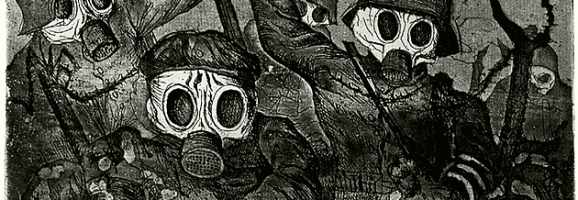
This naïve, blithe hope in scientific progress ended, on November 11, 1918, with a numbing and traumatic realization that not only would science fail to provide for our happiness, but would be, instead, an active instrument against any such fulfillment. The worldwide irrationality and senseless futility of the conflict destroyed any cultural sense of optimism and magnanimity on the European continent (as well as in America, though obviously not nearly as ravaged as Europe, although nearly 120,000 Americans died, with another 200,000 wounded) regarding the progress and beneficial advances of a scientific civilization. WWI demonstrated in a manner till that time unequaled the dark center of scientific endeavor.
The Decadent West
The undeniable irrationality of WWI, the bitter fruits of reason, leads inexorably to the question of the decadence of the West. In 1918, in Germany, an obscure thinker named Oswald Spengler published the first of a two-volume magnum opus entitled The Decline of the West (in German, Der Untergang des Abendlandes). (Untergang actually has a more foreboding sense in German – perhaps “ruination” or “doom” of the West might better capture Spengler’s pessimistic outlook.) HPL read the English translation sometime in 1927 and was deeply affected by Spengler’s vision of a degenerate Western civilization. The Lovecraft scholar S. T. Joshi puts Spengler at the forefront of Lovecraft’s philosophic ideas by naming his 1990 book: H. P. Lovecraft: The Decline of the West.
Although the term “decadence” is notoriously difficult to pin down, given the inherent subjectivity of judgment over whether an act, a set of behaviors, a work of art, or a movement is decadent, in its most general terms it indicates a state of decay, a decline, a degeneration. In these terms, Lovecraft and Spengler are clear: Western civilization will no longer address the fundamental problems that threaten to destroy its Weltgeist (World Spirit), and are in an inevitable, and unpreventable, period of decay. It is also clear that the inner force of Western, or, as Spengler calls him, “Faustian man,” (after the German legend, given its widely known form by Goethe, where Faust trades his soul to the Devil – Mephistopheles – for unlimited knowledge and worldly pleasures), resides in his attempt to reach the infinite through science, which has then created a culture of decadence.
In one of his early letters, Lovecraft writes that “All rationalism tends to minimise the value and importance of life, and to decrease the sum total of human happiness. In many cases the truth may cause suicidal or nearly suicidal depression” (Lovecraft, 1965, I, p. 65).
For Spengler, civilizations are akin to organisms: they are born, they develop, they mature, and they die. Civilizations thus follow a non-linear or a non-progressive path; Spengler uses the analogy of the symbolism of the seasons to make his point. Spring is the cultural awakening of the soul; summer is the maturation of consciousness and the rise of the urban city-states; autumn in the high point of the culture, urban in nature, and the product of a disciplined and organized strength; and winter is the period of senescence, the exhaustion of conscious organization taking place in a world-wide urban setting.
Lovecraft, like Spengler, considered himself in the winter of the world, living in a time of degeneration and decay, a decline from a formerly vital and life-enhancing culture to a decadent, crass, materialistic, and tawdry stage of civilization, doomed to failure or fall precisely because of its decadence. Scientific rationality, far from easing our burdens, contributes to the decadence of the Occident. There is a fundamental relationship between a universe seen and explained in scientific terms, the technology that results from such a position, and a state of decay, deterioration, and disintegration.
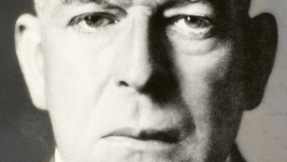
John Farrenkopf, in Prophet of Decline: Spengler on World History and Politics, formulates the problem clearly:
“The perennial question of decadence deeply interested Spengler, as it had Polybius, Ibn Khaldun, Charles Louis Montesquieu, and Gibbon before him. In the nineteenth century, decadence became a concern of Western historical and political thinkers amid urbanization, the acceleration of the industrial revolution, and secularization. Spengler argues that societal decadence befalls every civilization… Decadence is particularly insidious because it atrophies the ability of the population of the imperium mundi to remain in form for successfully meeting severe challenges in the arena of world politics. The atmosphere of panem et circenses (bread and circuses) of mass sensate culture, pervades the imperium mundi. Man is socially atomized and degenerates into a restless intellectual nomad, plagued with the taedium vitae reminiscent of imperial Rome. Society surrenders itself to sexuality as sport, to athletics, gambling, and mysticism as megalopolitan recreational pursuits” (Farrenkopf, 2001, p. 55).
At the beginning of the twentieth century, and having witnessed, as Lovecraft did from the other side of the Atlantic, the First World War, Spengler asks the fundamental questions: What are the origins of science and technology? What is the character of science and what sort of significance does it have for human history? What is the fate and consequence of science and technology, including the global environmental impact of a machine infested world?
Against the English utilitarian tradition, the purpose of science is not to increase the amount of happiness for the most people. Like his predecessor Friedrich Nietzsche, Spengler vehemently rejects the utilitarian fantasy of a world made happy by scientific progress. The purpose of the West’s scientific activity is the desire of Faustian man’s to conquer the infinite, to dethrone nature, and to elevate science and the scientist as a deity above a now prostrate nature. For both Lovecraft and Spengler, scientific progress does not alleviate our social, political, or economic problems – it exacerbates them. Scientific knowledge has undercut any religious or spiritual beliefs that formerly offered comfort for the inevitable vicissitudes of life.
Like Lovecraft, Spengler is repelled by American society in the thirties. Although Spengler never travelled to America, he perceives it as a mix of rampant superficial materialism, widespread criminality, and corruption. In Lovecraft’s terms, his reaction against this decadence takes the form of juxtaposing his puritanical code of conduct to the vacillating principles of the day. In a letter, Lovecraft writes:
“And as for Puritan inhibitions – I admire them more every day. They are attempts to make of life a work of art – to fashion a pattern of beauty in the hog-wallow that is animal existence – and they spring out of that divine hatred for life which marks the deepest and most sensitive soul…a Puritan in the conduct of life is the only kind of man one may honestly respect. I have no respect or reverence whatever for any person who does not live abstemiously and purely – I can like and tolerate him…but in my heart I feel him to be my inferior – nearer the abysmal amoeba and the Neanderthal man…” (Lovecraft, 1965, I, p. 315).
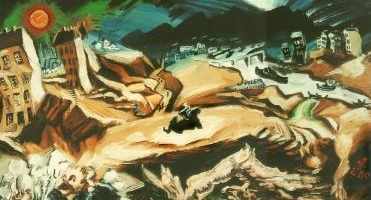
It is no accident, as China Miéville points out, that the words “decadent” or “decadence” and their derived forms are used no less than 28 times in “At the Mountains of Madness” (2005, p. xxi). In a letter written in 1928, Lovecraft makes explicit his agreement with Spengler:
“Spengler is right, I feel sure, in classifying the present phase of Western civilisation as a decadent one; for racial-cultural stamina shines more brightly in art, war, and prideful magnificence than in the arid intellectualism, engulfing commercialism, and pointless material luxury of an age of standardization and mechanical invention like the one now well on its course. It would be better if we could still be naïve, beauty-loving, and ignorant – yet we cannot turn the clock back” (Lovecraft, 1968., II, p. 228).
This decline, “one now well on its course,” means, as well, that the Western conceit of “The Idea of Progress” is just that, a conceit. It is, like the idea that there should not be forbidden knowledge, an assumed axiom in the modern Western world. But: Do not all civilizations inevitably decline? And if the West is in a present state of decline, what does that say about any linear idea of progress? It is only and always the becoming, the growing, and the dying, over and over; and this is the best we can do, as Spengler puts it in the last paragraph of Man and Technics:
“We are born into this time and must bravely follow the path to the destined end. There is no other way. Our duty is to hold on to the lost position, without hope, without rescue, like that Roman soldier whose bones were found in front of a door in Pompeii, who, during the eruption of Vesuvius, died at his post because they forgot to relieve him. That is greatness” (Spengler, 1935, p. 52).
Whether we think either Lovecraft or Spengler incorrect in their analysis of Western civilization, whether or not we think we are in a period of inevitable degeneration, those who flock to Lovecraft in any of his guises – short stories, novels, movies, video games, apparel, conventions, et al. – and those who spend a considerable amount of money on all things Lovecraftian, flock and spend because they see in his vision a reflection of what they see in their own.
They live on an express train of a world listing out of their control. They have no more say in what the world of tomorrow will be than a solitary ant has in the overall design of the colony. And while they embrace modern technology and use it with a vengeance, this does not mean they think that science has revealed to them the secrets of the universe, will guarantee or provide their fulfilment and happiness, ameliorate global social, political, health, and economic problems, or soften the labor by which we must make our way in the world.
As for the latter notion, that technology will spare us from tedious work (which has accompanied technological change like a parasite), Spengler has not a doubt:
“It is not true that human technics saves labour. For it is an essential characteristic of the personal and modifiable technics of man, in contrast to genus-technics, that every discovery contains the possibility and necessity of new discoveries, every fulfilled wish awakens a thousand more, every triumph over Nature incites to yet others. The soul of this beast of prey [Man] is ever hungry, his will never satisfied – that is the curse that lies upon this kind of life…” (Spengler, 1931, pp. 35-6).
The German word Technik, for Spengler, is more than just the mechanical manifestations comprising technology; it encompasses the practices, techniques, methods, and strategies that man uses in order to accomplish a diversity of ends, all within Western man’s continuous effort to control and master nature.
Scientific discoveries and consequent technology simply amplify the already bewildering array of possibilities that we must decide upon in choosing a path for our lives. Even the fact that we say “choose a life for ourselves” indicates a dethronement of traditional life. It is not obvious or easy to determine which of these possibilities will lead to fulfillment – indeed, it often seems like flipping a coin with an infinite number of sides. For every personal problem we seem to solve, we are forced to negotiate our way through a continuous string of other problems. For every social problem we seem to solve, we either create further problems (the law of unintended consequences) or discover new problems that need solving. And it is not that we want to return to some sort of romanticized, Jeffersonian, agrarian state, if such ever existed; it is that the choices we must make, the decisions we must take, continue to multiply in an overwhelming cloud that shrouds our view of what future our decisions will bring about in the context of the decisions of every other individual. And it is not at all evident what criteria we should use in order to secure the future which we would prefer.
Here is Lovecraft’s take on the capacity of technology to liberate, a resonant condemnation of the age of the machine:
“Granted that the machine-victim has leisure. What is he going to do with it? What memories and experiences has he to form a background to give significance to anything he can do?…What has heretofore made life tolerable for the majority is the fact that their natural workday routine and milieu have never been quite devoid of the excitement, nature-contact, uncertainty, non-repetition, and free and easy irregularity which build up a background of associations calculated to foster the illusion of significance and make possible the real enjoyment of art and literature. Now that it is fading, they are in a bad plight indeed; for they cannot hope to breast the tide of ennui as the stronger-minded minority can. There will be, of course, high-sounding and flabbily idealistic attempts to help the poor devils. We shall hear of all sorts of futile reforms and reformers – standardized culture-outlines, synthetic sports and spectacles, professional play-leaders and study-guides, and kindred examples of machine-made uplift and brotherly spirit…Meanwhile the tension of boredom and unsatisfied imagination will increase – breaking out with increasing frequency in crimes of morbid perversity and explosive violence” (Lovecraft, 1968, II, pp. 308-09).

In Faustian man’s attempt to subdue nature, nature, in the end, will win:
“…in this increasing interdependence lies the quiet and deep revenge of Nature upon the being that has wrested from her the privileges of creation. This petty creator against Nature, this revolutionary in the world of life, has become the slave of his creation. The Culture, the aggregate of artificial, personal, self-made life-forms, develops into a close-barred cage for these souls that would not be restrained. The beast of prey, who made others his domestic animals in order to exploit them, has taken himself captive” (Spengler, 1931, p. 35).
In the 21st century, the experimental and theoretical sciences in the West have only amplified these trends, creating a man enslaved by what he thought would make him free, and making of our universe a place ever more mysterious, bewildering, and frightening: multiple dimensions, quantum entanglement, parallel worlds, the manipulation of the human genome, runaway viruses, zoonotic or man-made, plagues, etc. The sciences have provided a basis for the imaginative leap into a world where Cthulhu rests in the oceanic abysses, the Elder Gods bide their time in the frozen ice of Antarctica, or in the realization there may be degenerate, horrifying hybrids dwelling in small and vacant towns abutting our own. This is not to say that most or all of Lovecraft’s followers actually believe that these things are real. They are significations that the modern world has overwhelmed us.
What those who gravitate to Lovecraft see – and more, embrace – is a revised gothic representation of a world gone spinningly mad. In his essay Supernatural Horror in Literature, Lovecraft writes about Gothic fiction that “All this paraphernalia reappears with amusing sameness, yet sometimes with tremendous effect, throughout the history of the Gothic novel; and is by no means extinct even today, though subtler technique now forces it to assume a less naive and obvious form” (Lovecraft, 1927, p. 8). Lovecraft, with his ‘weird realism,’ uses a subtler and less naïve technique in his twist on certain gothic conventions. Foregoing the foreboding castles, foggy moors, effete vampires, and unbelievable supernatural entities, he fashions a horror of reality, external and internal, as given to us by a modern world engulfed by science.
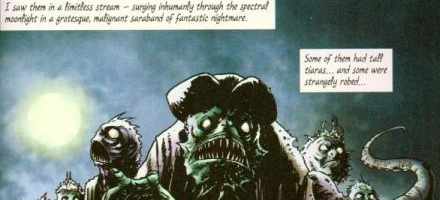
Whether you attribute Lovecraft’s influence and popularity to an ability to tap into our collective fears, or the atmosphere of dread he conjures, or the universal issues that humanity has always faced, or the vacillation individuals feel between hope and despair, or the individual’s existential loneliness, the path that modern society has taken since Lovecraft last wrote seems prescient.
His many fears about modern society have gone global. They include the spread of mechanization, sparked and further fueled by scientific endeavor; a capitalist economic system, made possible by science, that dehumanizes, turning everyone and everything into a commodity (I’m not sure what Lovecraft would say about the commodification of his own creations; I suspect he would douse the Shoggoth plush toy with oil and set it afire). The list continues: The capitalist drive to create needs we never knew existed; the world-wide and accelerating trend of urbanization and all of its attendant problems; and the degeneration of aesthetic judgment and activity in all of the arts. All of these factors, processes, forces, all of Lovecraft’s fears, have intensified and escalated such that we no longer feel the security civilization should vouchsafe to us while simultaneously flailing through a vast chasm of ever multiplying choices.
In a collection of short stories titled The New Gothic, the editors in their introduction wrote:
“We stand at the end of a century whose history has been stained perhaps like no other by the blacker urges of human nature. The prospect of an apocalypse – through human science rather than divine intervention has redefined the contemporary psyche. The condition that Western souls once found in religion has faded…Now hell is decidedly on earth, located within the results and chambers of our own minds” (McGrath & Morrow, 1991, p. xiv).
Well before the completed panoply of the 20th century’s self-inflicted shocks and outrages, Lovecraft knew that “life is a hideous thing,” made it artistically manifest in his fiction, and said it outright is his many letters. And, it seems, many agree, from the superficial (Cthulhu retro action toys) to the astute (the inevitable degeneration of Western civilization), from the slight (Yog-Sothoth t-shirts) to the discerning (scientific rationality produces irrational ends). Whether this ample and abundant interest in Lovecraft is cause for hope or despair lies both in the dark heart of past time and in a future world whose contours we cannot see.
Works Cited
Bacon, Francis (1620). The Great Instauration. Accessed August 17, 2014 at: http://en.wikisource.org/wiki/The_Great_Instauration.
Clark, Ronald (1971). Einstein: The Life and Times. Ohio: The World Publishing Company, pg. 620
Colavito, Jason (2008). Knowing Fear: Science, Knowledge and the Development of the Horror Genre. North Carolina: McFarland & Company, Inc., Publishers.
Farrenkopf, John (2001). Prophet of Decline: Spengler on World History and Politics. Baton Rouge, Louisiana: Louisiana State University Press.
Ferguson, Christine (2002). “Decadence as Scientific Fulfillment,” in Proceedings of the Modern Language Association, Vol. 117, No. 3, pp. 465-476.
Geer, Dan (2014). Cybersecurity as Realpolitik. Accessed August 21, 2014 at: https://www.youtube.com/watch?v=nT-TGvYOBpI.
Joshi, S. T. (1990). H. P. Lovecraft: The Decline of the West. New Jersey: Wildside Press.
Kafka, Franz (1915). The Metamorphosis. Translated by Stanley Corngold (1972). New York: Random House.
Keegan, John (1999). The First World War. New York: Alfred A. Knopf.
Lovecraft, H. P. (1919). “Dagon,” The Vagrant, No. 11, pp. 23-29.
Lovecraft, H. P. (1920). “Nyarlathotep,” The United Amateur, 20, No. 2, pp. 19-21.
Lovecraft, H. P. (1921). “Facts Concerning the Late Arthur Jermyn and His Family,” The Wolverine, No. 9, pp. 3-11.
Lovecraft, H. P. (1921). “The Nameless City,” The Wolverine, No. 11.
Lovecraft, H. P. (1922). “Herbert West – Reanimator,” Home Brew, 1, No. 1.
Lovecraft, H. P. (1927). “Supernatural Horror in Literature,” The Recluse, No. 1, pp. 23-59.
Lovecraft, H. P. (1928). “Call of Cthulhu,” Weird Tales, 11, No. 2, pp. 159-78.
Lovecraft, H. P. (1929). “The Dunwich Horror,” Weird Tales, 13, No. 4, pp. 481-508.
Lovecraft, H. P. (1929). “The Silver Key,” Weird Tales, 13, No. 1, pp. 41-49.
Lovecraft, H. P. & Whitehead, Henry S. (1932). “The Trap,” Strange Tales of Mystery and Terror, 2, No. 1.
Lovecraft, H. P. (1933). “Dreams in the Witch House,” Weird Tales, 22, No. 1, pp. 86-111.
Lovecraft, H. P. (1936). “At the Mountains of Madness,” Astounding Stories, 16, No. 6, pp. 8-32.
Lovecraft, H. P. (1936). The Shadow Over Innsmouth. Everett, PA: Visionary Publishing Company, pp. 13-158.
Lovecraft, H. P. (1941). “The Case of Charles Dexter Ward,” Weird Tales, No. 9, pp. 8-40 and No. 10, pp. 84-121.
Lovecraft, H. P. (1965). Selected Letters: 1911-1924, Volume I. Edited by August Derleth & Donald Wandrei. Sauk City, Wisconsin: Arkham House Publishers, Inc.
Lovecraft, H. P. (1968). Selected Letters: 1925-1929, Volume II. Edited by August Derleth & Donald Wandrei. Sauk City, Wisconsin: Arkham House Publishers, Inc.
Lovecraft, H. P. (1971). Selected Letters: 1929-1931, Volume III. Edited by August Derleth & Donald Wandrei. Sauk City, Wisconsin: Arkham House Publishers, Inc.
Lovecraft, H. P. (1976). Selected Letters: 1932-1934, Volume IV. Edited by August Derleth & Donald Wandrei. Sauk City, Wisconsin: Arkham House Publishers, Inc.
Lovecraft, H. P. (1976). Selected Letters: 1934-1937, Volume V. Edited by August Derleth & Donald Wandrei. Sauk City, Wisconsin: Arkham House Publishers, Inc.
Mackenzie, Morell (1886). “Is Medicine a Progressive Science?” The Eclectic Magazine of Foreign Literature, Science, and Art, Vol. XLIV, 1886, pp. 160-66.
McGrath, Patrick & Morrow, Bradford (1991). The New Gothic. New York: Random House.
Miéville, China (2005). “Introduction” to At the Mountains of Madness: The Definitive Edition. New York: The Modern Library.
Nietzsche, Friedrich (1968). Twilight of the Idols and The Anti-Christ. Originally published 1888. Translated by R. J. Hollingdale. Harmondsworth: Penguin Books.
Oppenheimer, Robert (1947). “The Arthur D. Little Memorial Lecture at M.I.T.” Accessed August 16, 2014 at: http://en.wikiquote.org/wiki/Robert_Oppenheimer.
Rasmussen Reports (2013). “56% View Feds As Threat to Individual Rights.” Accessed August 23, 2014 at: http://www.rasmussenreports.com/public_content/politics/general_politics/june_2013/56_view_feds_as_threat_to_individual_rights.
Simon, Linda (2004). Dark Light: Electricity and Anxiety From the Telegraph to the X-Ray. New York: Harcourt Books, Inc.
Spengler, Oswald (1918 & 1922). The Decline of the West, 2 vols. Originally Untergang des Abendlandes. Translated by Charles Francis Atkinson. New York: Alfred A. Knopf, 1926.
Spengler, Oswald (1931). Man and Technics: A Contribution to a Philosophy of Life, translated from the German by Charles Francis Atkinson, New York: Alfred A. Knopf, 1932. Originally Der Mensch und Die Technik, Munich: C.H. Beck Verlagsbuchhandlung.
Strauss, Leo (1964). The City and Man. Chicago: Rand McNally & Company.
Weber, Max (1946). Max Weber: Essays in Sociology. Translated by H. H. Gerth & C. Wright Mills. New York: Oxford University Press. Originally delivered as a speech “Science as a Vocation” at Munich University, 1918.
Weber, Max (1994). Weber: Political Writings. Edited by Peter Lassman. Translated by Ronald Speirs. Great Britain: Cambridge University Press.
Wells, H. G. (1921). The Outline of History. New York: Macmillan. Third edition.
White, Matthew (2012). The Great Big Book of Horrible Things. New York: W. W. Norton & Company.
What do you think? Leave a comment.











I like his stories and novels because you know the protagonist is toast right from the start. While he stumbles around trying to decipher the signs and portents, you know the Old Ones are behind them all, and you know what’s going to happen. The mythos is consistent and predictable. We’re like the audience in a grisly pantomime, shouting “Look out behind you!”
Lovecraft was an excellent writer, almost always in complete control of his various style, which he altered for the specifics of the mood of the story he was writing. His fiction, for its time, was very modern, and part of what makes E’ch-Pi-El still so widely read and published today is that his prose has a kind of timelessness, as does all really excellent writing. He was a great writer in every Literary sense, which has earned him the essays devoted to him by more and more real Literary scholars who understand that which constitutes good writing. His edition from The Library of America stands as solid testament of his standing as a Classic of American Literature.
Thorough enjoyed this essay.
He made good stories but was he really a great writer?
Anyone who still influences people this long after his death is by definition a good writer. Tolkien’s writing is often pedantic and overwrought, and yet he’s also a good writer. Asimov’s characters were flat as paper, and he’s a good writer. Phillip K Dick, Robert Heinlein, and many, many more.
I can’t get enough of the man’s writing, and even I admit that he is far from a perfect wordsmith. I still think he manages to get across the feel of horror more than most other writers though, and for that i forgive him his poor choices.
Lovecraft in my view was a pretty terrible writer in many regards (particularly an over reliance on purplish prose full of obscure adjectives, poor characterisation and atrocious dialogue), but he was indeed a visionary for his ideas and “world building” and he continues to cast a long shadow over not only horror, but sci-fi, fantasy and even “heavy metal”… And probably one greater than any other horror writer in history I would think. But I’d also like to make a couple of other points: The first is that the world would never have known of Lovecraft and his ideas were it not for the efforts of August Derleth (as opposed to Lovecraft’s meager efforts in this regard), who not only took it upon himself to publish and promote Lovecraft’s works, but also finished some of them (including At the Mountains of Madness). And the second point is that fiction written in a “Lovecraftian” style would never get published by any large publisher today, it’s simply too inaccessible and over-wrought. Despite all these things, he remains one of my biggest influences…
Excellent post. I’ve always found Lovecraft’s style to be part of his appeal. Love it or hate it, it’s uniquely his voice.
H. P. Lovecraft was a brilliant writer who mostly succeeded in achieving his artistic goals, which were in part the creation of supernatural fiction that reached heights of Literary Art.
Great read.
It is ironic how HPL loved science but frequently made it a source or cause of evil in his stories. In a way this is similar to a lot of Michael Crichton’s work. Science is the cause of all of our problems and if we only stayed in the trees, ate bananas and picked parasites off each other we would have been better off.
However, when you look at some of Lovecraft’s other, non-fictional writings, particularly in Astronomy, you see that he had a great love and respect for science.
I think science was an effective plot devise that Lovecraft loved to use on a regular basis.
I believe Lovecraft was a true fan of science. I do think Lovecraft wanted to warn us in his stories that science can go too far and when humanity does, that is when the real horrors begin!
I personally like his obsession with mankind’s shocking inability to know the truth. He repeats over and over: the unnameable, the unknoweable, the unspeakable. I find this a comforting, albeit guilty, pleasure…
What Lovecraft tapped into was modernism, and not the soft derived modernism of the avant-garde artists, but the original modernism of the physicists and the mathematicians: set theory, non-Euclidian geometry, relativity, quantum mechanics. He plays on anxiety, rather than fear, depicting a cosmos that is not only counter-intuitive but, in fact, inexplicable. The horror is in our awareness of unknowable malignancies that are so far beyond our comprehension that we cannot describe them. “That is not dead, which can eternal lie, and with strange aeons, even death may die.”
I remember reading his works in my teens. I had to sleep with my light on for a loooong time, even calling my mother at night because I was terrified. I just couldn’t stop reading even though I knew it would affect me later. great writer.
Nice article, very good read.
Im a big Lovecraft fan my favourite stories are At the Mountains of Madness and The case of Charles Dexter Ward to name a few…
The utter bleakness of his stories… There is no hope, no god, no science, no nothing can save us. People are dumb, bumbling happy meals, with legs. Something is so chilling about his stories, so different from Steven King happy endings (or hero, with a bit of belief in god, self sacrifices, so saving the day type stuff). Darker, bleaker than any hammy Gothic yarn. In Lovecraft there is no real escape, only madness or death. I’m not sure anyone has been so bleak, yet created such a fully realised mythos. Badly written and racist much of it is, but in pure creativity and imagination, it is exceptional.
You’ve not read King’s The Mist then? A fine love letter to Lovecraft, and a far from cheerful ending.
Well done. I found this essay quite fascinating and have shared it with my local book club.
The greatest bad writer of all time.
I personally find HP quite cheerful. However depressed I am about the real world I’m unlikely to be devoured by gibbering squamous horrors from beyond space and time so the contrast is refreshing. Even the racism is so overblown I find it hard to be as offended as I should be. Actually I suspect most of the genuine fear of the alien and strange in Lovecraft is just sublimation of his xenophobia. I have been to towns that felt like Innsmouth though.
He had an amazing imagination.
The longest I’ve ever taken to read a book was the monolithic At The Mountains of Madness which is only 100 pages but the prose is just so dry that it’s a chore and, even worse, his way of conveying fear by having the characters basically say ‘the scene is so horrific that I can’t describe it’ feels incredibly cheap. To me, he’s basically literature’s Marilyn Manson: has this aura of being spooky and edgy but the actual content is really bad.
A lot of the fun (!) of reading Lovecraft is letting your own imagination take over where his protagonists do not or, even better, cannot describe the situations for themselves. This probably means that attempts to film the original stories are doomed because personal interpretations are likely to be wildly different. Saying which, I’d love to see the proposed Guillermo del Toro take on In The Mountains of Madness.
I love HPL Why well the oddness of it all, the strangeness of it all, the alienness of it all. At the Mountains of Madness, The Call of Cthulhu, The Shadow over Innsmouth’ I will read time and time again.
The descriptions of the various races and worlds to me are amazing – not a strange knobbly forehead in sight! believably strange places and creatures when I read any of his stories I can almost feel the fear and smell the rot and damp hear the shuffling which for me is quite an unusual thing.
The Haunter of the Dark gave me nightmares that recurred for years and The Shadow Out Of Time made me too scared to turn the page. I was, admittedly, about 12 but nothing’s ever had that effect on me since.
Great follow-up to part 1! Very interesting read.
Great work CDK. I just encountered Lovecraft for the first time in an academic setting; it was reading “A Letter on Religion” in my philosophy of religion class. He is a very interesting writer and I will definitely be checking him out some more as time allows.
I finally got round to reading some of his work recently. I was somewhat surprised to find that the three stories I plucked at random all featured a valley with a river running through it from which an unspeakable horror that smelled of fish would arise.
I started reading Lovecraft in high school, in the early ’60’s, before the horror genre took off. I fell in love with the hyperbole in his use of language. Everything was aghast in the horror of the unknown and unthinkable. It never dawned on me that there was a root-fear of science behind it and I’m not sure I buy into that idea now. I always felt it was a throwback to fear of the unknown. Science gives release from fear.
The “Creepy Surveillance Guy” above the Nyarlathotep-quote is a graphic depiction of the actor Gene Hackmann in the classic 1974 Coppola movie “The Conversation”. I know, it is part of popular culture, but it is the only culture we have.
Awesome follow-up. Even though he is known for horror and not necessarily sci fi, science and Lovecraft’s views on reality influenced his works about the terror of the unknown and monstrous life. Thank you for the well-researched article.